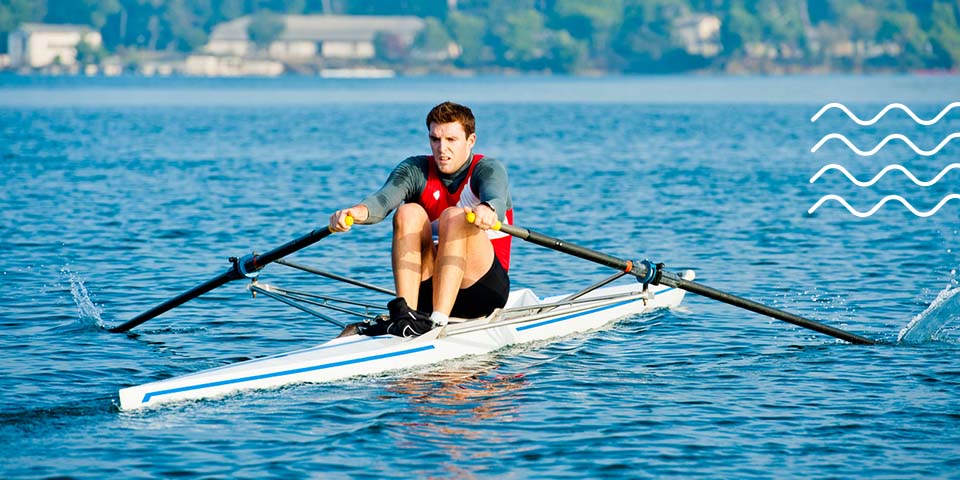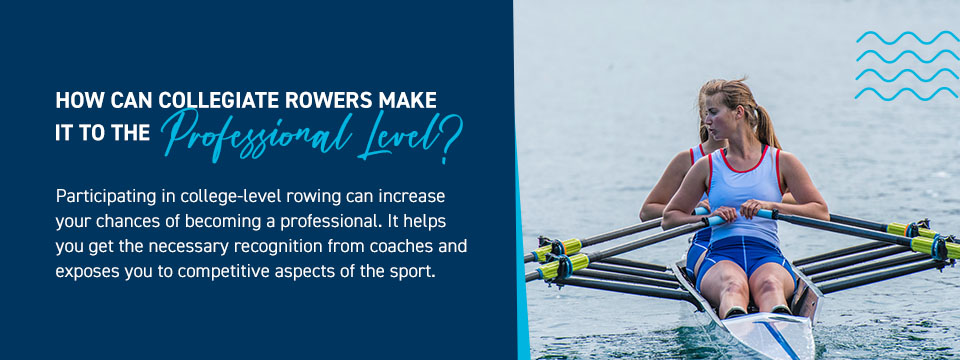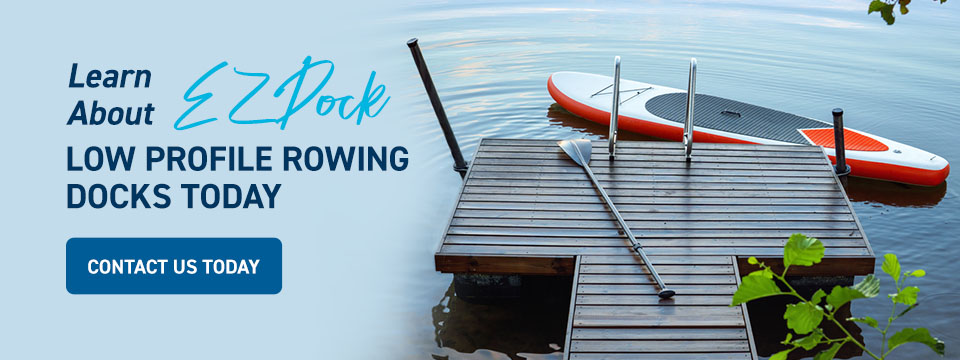Filters
Professional Rowing FAQs
Rowing is one of the oldest sports in history and remains popular today. Due to its popularity, people of various ages and backgrounds strive to make it to the professional level. If you’re curious about pursuing rowing as a career, take a look below to see various frequently asked questions about professional rowing and their answers.
1. How Can I Get Started With Professional Rowing?
There are many ways to start professional rowing, but the most accessible path is either joining a rowing club or a college rowing team.
Joining a rowing club helps you learn the basics of rowing and allows you to improve your skills in a competitive atmosphere. It also connects you with like-minded, passionate individuals with whom you can share your experiences.
There are many rowing clubs throughout the United States, especially in areas with notable rowing traditions like Boston. However, you can find quality rowing clubs in nearly every city across the country. Explore the U.S. national rowing team’s rowing club location finder to locate one near you.
You can also take advantage of college programs to become a professional rower. Most colleges across the country have effective rowing systems that help young talent go professional. Begin your journey by joining your high school rowing team to increase your chances of being scouted to join a collegiate team. Joining a club team is also an option, though it may be more of a process to go pro that way.
For further practice, join summer camps such as the National Collegiate Scouting Association college rowing camps, U.S. Rowing development camps and row2k rowing camps to learn and network with professional rowers, students and coaches.
2. What Is a Professional Rowing Practice Like?
Collegiate rower practices are challenging but exciting and rewarding. The aim is to build your skills mentally and physically and adequately prepare you for competition. Professional rowers often train twice a day to get in peak shape. This includes personal and team training.
Elite rowers wake up early almost every day of the week to practice. These sessions begin with warmups to prepare for boat training. The afternoons may be reserved for gym training and erg practice between classes.
Each day of the week — from Monday to Saturday — is reserved for a particular activity to achieve comprehensive training. Sundays are meant for resting and recovery. Although each day’s activity may differ depending on the team or athletes’ strategy, the routine typically follows a similar pattern. Practice is optional during the off-season, but many rowers continue to practice to maintain their strength and abilities.
Rowing practice requires discipline, perseverance, sacrifice and commitment to perform optimally, especially for college students who need to balance sports, academics and social engagements.
3. Are There Height or Weight Requirements to Be a Professional Rower?
There could be height and weight requirements to join a team. While some teams put a premium on height and weight for rowers, others focus on the power generated per stroke. The height and weight categories offer a ballpark range and are usually wide enough to accommodate a large group of individuals.
Coaches often look for taller recruits because they appear to have more upside, which allows rowers more length and leverage in their strokes. Weight is suitable for power generation. However, it is looked at less than height and 2k erg times. The most important factor remains your 2k erg time.
The coxswain is usually the smallest and lightest member of the crew. This is because they steer rather than power the boat. Again, some coaches require a minimum weight for coxswains depending on their preference, style and strategy.
4. What Is a Professional Rower Called?
A professional rower can either be a rower or a coxswain.
Rowers are the athletes who hold the oar, sit backward in the boat and power the boat to move down the course. They’re also called oarswomen or oarsmen.
A coxswain is responsible for navigating the boat, calling the race plan, coordinating the rowers and providing motivation to help the crew stay safe and competitive.
5. What Should a Professional Rowers Diet Consist of?
A professional rower’s diet typically consists of proteins, fats and carbohydrates, collectively called “macronutrients.” These three nutrients fuel the growth, movement and damage repair of rowers.
Proteins
Proteins are the body’s functional and structural components. Intense training sessions and competitions result in some muscle damage, which informs the body to build the muscle stronger. During this process, protein helps increase and improve the rate and efficiency of repair.
Good protein sources include products such as eggs, chicken breast, lean ground beef, shrimp and tuna. Dairy products such as cheese, milk and yogurt are also excellent protein sources. For vegetarians or vegans, soy-based foods, including beans and tofu, are recommended. The amount of protein you should consume depends on your body weight.
Fats
Fats are crucial for absorbing the minerals and vitamins in our foods. They provide extra energy, which rowers need for workout sessions. The kinds of fats include:
- Saturated fats: Also called solid fats, these fats are found in fatty animal based-foods such as pork, beef, poultry and oils. Your body requires minimal quantities of saturated fats to survive. For example, if you need 2,000 calories daily, less than 120 of them should come from saturated fats.
- Unsaturated fats: These are healthy fats that are essential to your health. You can obtain unsaturated fats from avocado, canola oil, olive oil and peanuts. They improve blood cholesterol levels and ease inflammation.
- Trans fats: Trans fats are categorized into naturally occurring and artificial trans fats. They can be found in foods like frozen pizza, cakes and cookies. Reducing trans fats in your diet lowers your low-density lipoprotein cholesterol levels and increases your high-density lipoprotein cholesterol levels, which is necessary for athletes to perform at the highest level.
Choose unsaturated fats over saturated and ensure that 25-30% of your daily calories come from fat. That is equal to one serving per meal.
Carbohydrates
Carbohydrates are your body’s primary energy source. You can gain them through simple carbohydrates and complex carbohydrates. Simple carbohydrates include refined starches and sugars stripped of their natural fiber and nutrients. Complex carbohydrates are found in unprocessed foods, vegetables, fruits, whole grains and legumes.
The amount of carbohydrates you need depends on the energy you use. Therefore, more workouts and training equals high carbohydrate intake. Nutrition specialists use the Athlete’s Plate guide to assess how much carbohydrates athletes need to stay energized.
6. What Kind of Training Is Required for Professional Rowers?
Professional rowing training requires endurance and muscular strength. While water and erg training focus on endurance, weight exercises help elite rowers build muscles. Sometimes, both sessions complement each other. For example, increasing your strength reduces the effort required per stroke, ultimately improving your endurance and long-term potential.
Additionally, periodization is a significant component of strength training for rowing. Elite rowers organize their training sessions to prioritize certain qualities over others at varying times. With this approach, you can focus on critical areas such as power, strength, endurance, balance and technique.
A typical training session for professionals includes five stages:
- General preparation: General training sessions are day-to-day activities but may increase in intensity 12 to 16 weeks before more specific preparation is required. These sessions predominantly focus on muscular balance, strength and cardiovascular endurance. The aim is to build a foundation for a more strict regimen.
- Specific preparation: Between eight to 16 weeks through the fall and winter, rowers increase their water-based practices while performing general workouts. Focus on bodybuilding and technique to prepare you for pre-competitive training. Besides building core and physical strength, these sessions help you prepare mentally.
- Pre-competitive training: Six to eight weeks before the racing season is critical for tuning up power and maintaining aerobics. The aim is to maximize output. It’s the final stage to reaching your peak strength.
- Competitive training: Rowers train six to 12 weeks during spring sprint race season. These sessions focus on health, strength maintenance, performance and technique. Arrange your sessions to avoid fatigue-heavy training to reserve your strength for races.
- Recovery: Use two to four weeks for physical and mental healing immediately after the final race. Take time off to enjoy other activities with less intense workout sessions in between. This approach helps you prepare for next year’s annual training cycle.
7. How Can Collegiate Rowers Make It to the Professional Level?
Participating in college-level rowing can increase your chances of becoming a professional. It helps you get the necessary recognition from coaches and exposes you to competitive aspects of the sport. Competitions such as the National Collegiate Rowing Championship and the various National Collegiate Athletic Association championships can steer you into participating in the prestigious regattas in the country.
Becoming a junior World Champion and participating in the World Rowing Under 23 Championships are stepping stones to the senior elite ranks. The senior World Championships are held at the end of the international rowing season and consist of the best rowers, most of whom went through the competitive collegiate system. The ultimate goal for professional rowers is becoming Olympic champions.
8. How Can Collegiate Rowers Balance Training and School for Success?
Collegiate rowers can efficiently juggle between school and training with institutional support, a good team culture and personal accountability.
- Institutional support: Institutional support means finding and joining a college that aligns with your athletic and academic goals. It’s much easier to succeed when you love what you do. Research thoroughly and join a program that offers support to college athletes.
- Team culture: Team culture has a significant impact on social and academic life. It helps when the team spirit enables an accepting atmosphere that pushes each crew member to reach their personal best. Rowers with advanced athletic prowess can assist those who need help improving. Similarly, coaches can offer support away from the water to help rowers balance their academics and personal lives.
- Personal accountability: As a collegiate athlete, it’s crucial to be disciplined and dedicated. College life requires you to be aware of the impact of your decisions. Taking responsibility for your time and planning diligently is the key to success. Plan your training sessions, study periods and social engagements, and understand that a little sacrifice is necessary to become a professional athlete.
9. What Should Professional Rowers Expect as They Age?
As we age, our bodies change. Between 20 and 30, rowers can maintain high-level fitness close to what they experienced in college. Some athletes even surpass their college performance. Many rowers reach their peak by the late 20s and early 30s.
Rowers typically have limited time remaining in the sport when they turn 40, as they may have families to consider and busy work lives to manage. However, dedication and effort can go a long way to keep you rowing. Sir Steve Redgrave won his fifth Olympic gold medal at 38. At 46, Ekaterina Karsten still performed at the highest level, and Olympic champion James Cracknell was an integral part of the Cambridge crew at the same age.
Surprisingly, many rowers are the most competitively-minded as they approach 50. Rowers tend to be well-developed around this age, and they may have more free time to pursue rowing seriously again as their children grow up. Biologically, 50-year-olds experience hormonal and metabolic changes, making it essential to maintain a good sleeping pattern and train strategically to increase recovery times and performance.
Rowers between the ages of 60 and 80 may continue to row despite undergoing significant metabolic changes. Retirement may offer the opportunity to train more, making it easier to find the time to row. You may not perform as you did in your 40s, but you may hit steady erg times and enjoy rowing for fun and a solid workout.
Learn About EZ Dock Low Profile Rowing Docks Today
Rowing is one of the most intense and exciting sports in the world. Elite rowers utilize reliable information and equipment to help them reach their full potential. Building stable and straightforward docks allows you and your team to row efficiently and safely. For example, low-profile rowing docks have incredible stability and are engineered to meet FISA and U.S. Rowing standards.
EZ Dock provides only the best docks that allow you to concentrate on improving your rowing skills without worrying about maintenance. Contact us today to learn more about our high-quality, low-profile rowing docks.















